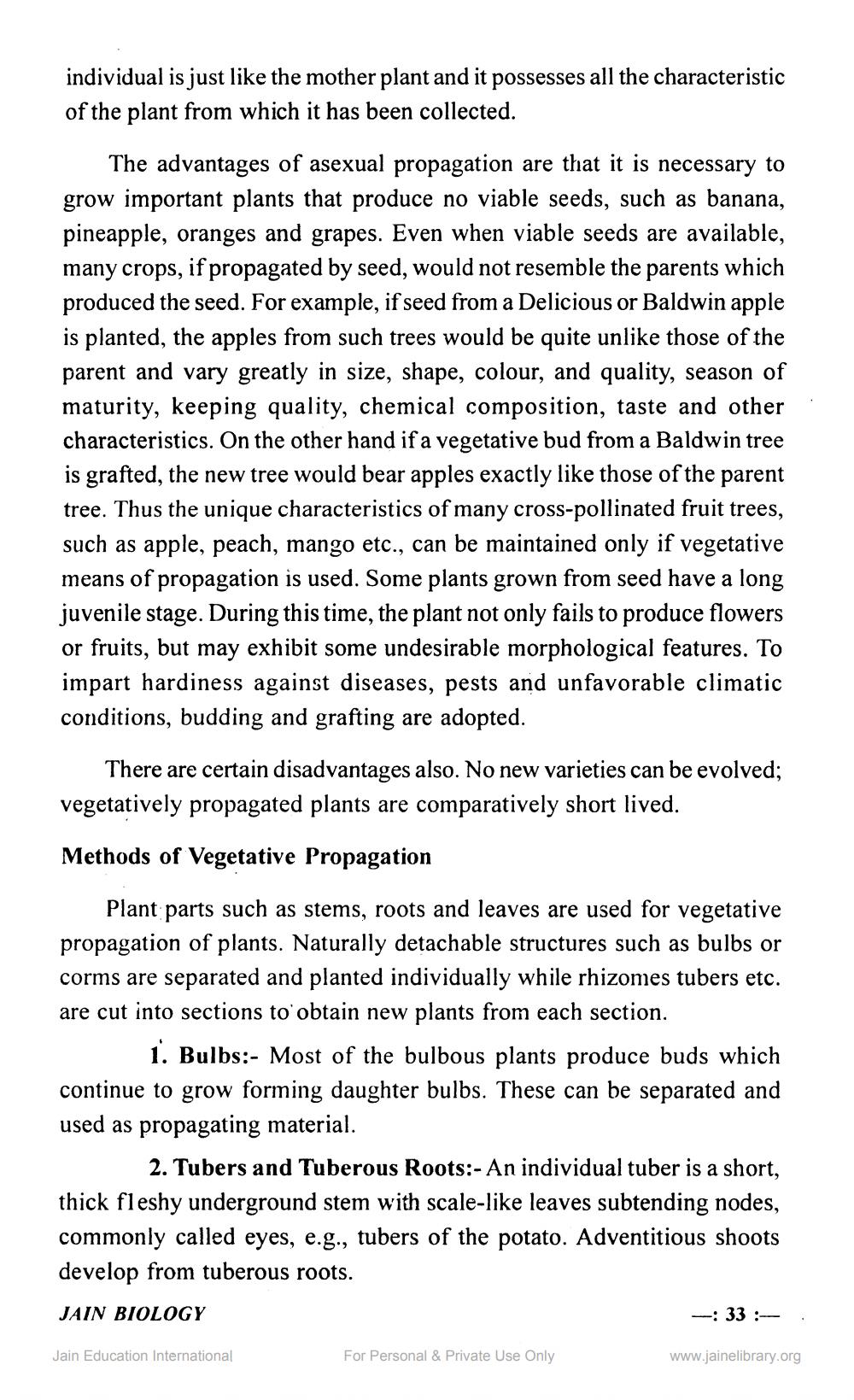________________
individual is just like the mother plant and it possesses all the characteristic of the plant from which it has been collected.
The advantages of asexual propagation are that it is necessary to grow important plants that produce no viable seeds, such as banana, pineapple, oranges and grapes. Even when viable seeds are available, many crops, if propagated by seed, would not resemble the parents which produced the seed. For example, if seed from a Delicious or Baldwin apple is planted, the apples from such trees would be quite unlike those of the parent and vary greatly in size, shape, colour, and quality, season of maturity, keeping quality, chemical composition, taste and other characteristics. On the other hand if a vegetative bud from a Baldwin tree is grafted, the new tree would bear apples exactly like those of the parent tree. Thus the unique characteristics of many cross-pollinated fruit trees, such as apple, peach, mango etc., can be maintained only if vegetative means of propagation is used. Some plants grown from seed have a long juvenile stage. During this time, the plant not only fails to produce flowers or fruits, but may exhibit some undesirable morphological features. To impart hardiness against diseases, pests and unfavorable climatic conditions, budding and grafting are adopted.
There are certain disadvantages also. No new varieties can be evolved; vegetatively propagated plants are comparatively short lived.
Methods of Vegetative Propagation
Plant parts such as stems, roots and leaves are used for vegetative propagation of plants. Naturally detachable structures such as bulbs or corms are separated and planted individually while rhizomes tubers etc. are cut into sections to obtain new plants from each section.
1. Bulbs:- Most of the bulbous plants produce buds which continue to grow forming daughter bulbs. These can be separated and used as propagating material.
2. Tubers and Tuberous Roots:- An individual tuber is a short, thick fleshy underground stem with scale-like leaves subtending nodes, commonly called eyes, e.g., tubers of the potato. Adventitious shoots develop from tuberous roots.
JAIN BIOLOGY
Jain Education International
For Personal & Private Use Only
-:33:
www.jainelibrary.org




